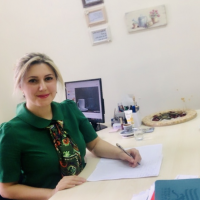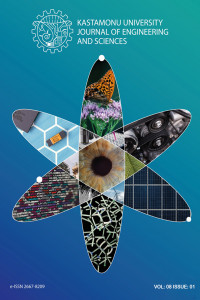Research Articles
Issue Editorial Board






2000 yılında Zonguldak Karaelmas Üniversitesi Peyzaj Mimarlığı Bölümü’nde lisans, 2004 yılında ZKÜ Peyzaj Mimarlığı Anabilim Dalı’nda Yüksek Lisans, 2009 yılında ise Ankara Üniversitesi Fen Bilimleri Enstitüsü Peyzaj Mimarlığı Anabilim Dalı’nda Doktora eğitimini tamamladı. 2010 yılında Yardımcı Doçent unvanı aldı. Doktora tez çalışması sürecinde 2006-2007 yıllarında Amerika Birleşik Devletleri’nde State University of New York College of Environmental Science and Forestry (SUNY-ESF) ile Mississippi State University Peyzaj Mimarlığı Bölümlerinde, 2008 yılında ise Almanya’da Technical University of Berlin’de Peyzaj Mimarlığı ve Çevre Planlama Enstitüsü’nde doktora konusu kapsamında araştırmalarda bulundu. Doktora sonrası araştırma yapmak üzere YÖK-Bartın Üniversitesi desteğiyle Technical University of Munich’de Stratejik Peyzaj Planlama ve Yönetimi kürsüsünde Konuk Öğretim Üyesi olarak bulundu. Akademisyenliğe 2002 yılında başlayan Prof. Dr. Canan Cengiz halen Bartın Üniversitesi Mühendislik, Mimarlık ve Tasarım Fakültesi Peyzaj Mimarlığı Bölümü’nde öğretim üyesi olarak lisans ve lisansüstü programlarda dersler vermektedir. Ekolojik peyzaj planlama, sürdürülebilir ve akıllı kentler, bütünleşik kıyı planlaması ve yönetimi, kent ekolojisi, yeşil altyapı sistemleri, tarihi çevrelerde peyzaj planlama ve tasarım uzmanlık konuları ve akademik ilgi alanları arasındadır.






Aim & Scope
The journal's scope is broad and topics covered in the journal include, but not limited to:
Bioengineering,
Biomedical Engineering,
Civil Engineering,
Computer Engineering,
Electrical and Electronic Engineering,
Environmental Engineering
Food Engineering,
Material Engineering,
Mechanical Engineering,
Astronomy,
Biology,
Chemistry,
Mathematics,
Physics
Author Guidelines
ORCID ID: https://orcid.org/0000-0002-7321-8508
Title:
- The first letters of each word in the title should be capital,
- The font should be Times New Roman, sized 12 pt and bold.
All Author Names and Affiliations:
- The names of the authors under the title should be written without any abbreviation,
- The first letter of the first and last name should be capital,
- The font should be size 10 pt and aligned in the middle,
- Comma should be used to separate authors names,
- The number should be used as the superscript (1, 2, 3, etc.) to specify affiliations,
- Corresponding author should be flag with (*) symbol,
- The full addresses of the authors should be written in lower case, aligned in the middle and italic,
- The full addresses should be located just below of authors’ name,
- Corresponding author's e-mail address should be located lower-left corner of the first page and indicated with the symbol (*)
- Please click to see the sample format.
Abstract:
- Abstract should be maximum 250 words,
- The font should be Times New Roman, sized 8 pt,
- It should contain maximum 5 keywords.
Text:
The font should be Times New Roman, sized 10 pt, and lines should be spaced with 1.5 lines,
Text organization should be:
o Introduction
o Materials and Methods
o Results
o Discussion and Conclusion
o Acknowledgements (if necessary)
o References
Tables and figures should be appropriate size and they should be located in text with proper locations.
References:
In Text: Cite all references in text by numbers with box brackets. Grouped text citations should be arranged from the earliest to most recent year, alphabetized by name within the same year.
Basic format for books:
J. K. Author, “Title of chapter in the book,” in Title of His Published Book, xth ed. City of Publisher, (only U.S. State), Country: Abbrev. of Publisher, year, ch. x, sec. x, pp. xxx–xxx.
Examples:
[1] G. O. Young, “Synthetic structure of industrial plastics,” in Plastics, 2nd ed., vol. 3, J. Peters, Ed. New York, NY, USA: McGraw-Hill, 1964, pp. 15–64.
[2] W.-K. Chen, Linear Networks and Systems. Belmont, CA, USA: Wadsworth, 1993, pp. 123–135.
Basic format for periodicals:
J. K. Author, “Name of paper,” Abbrev. Title of Periodical, vol. x, no. x, pp. xxx-xxx, Abbrev. Month, year, DOI. 10.1109.XXX.123456.
Examples:
[3] J. U. Duncombe, “Infrared navigation—Part I: An assessment of feasibility,” IEEE Trans. Electron Devices, vol. ED-11, no. 1, pp. 34–39, Jan. 1959, 10.1109/TED.2016.2628402.
[4]
E. P. Wigner, “Theory of
traveling-wave optical laser,”
Phys. Rev.,
vol. 134, pp. A635–A646, Dec. 1965.
[5] E. H. Miller, “A note on reflector arrays,” IEEE Trans. Antennas Propagat., to be published.
Basic format for reports:
J. K. Author, “Title of report,” Abbrev. Name of Co., City of Co., Abbrev. State, Country, Rep. xxx, year.
Examples:
[6] E. E. Reber, R. L. Michell, and C. J. Carter, “Oxygen absorption in the earth’s atmosphere,” Aerospace Corp., Los Angeles, CA, USA, Tech. Rep. TR-0200 (4230-46)-3, Nov. 1988.
[7] J. H. Davis and J. R. Cogdell, “Calibration program for the 16-foot antenna,” Elect. Eng. Res. Lab., Univ. Texas, Austin, TX, USA, Tech. Memo. NGL-006-69-3, Nov. 15, 1987.
Basic format for handbooks:
Name of Manual/Handbook, x ed., Abbrev. Name of Co., City of Co., Abbrev. State, Country, year, pp. xxx-xxx.
Examples:
[8] Transmission Systems for Communications, 3rd ed., Western Electric Co., Winston-Salem, NC, USA, 1985, pp. 44–60.
[9] Motorola Semiconductor Data Manual, Motorola Semiconductor Products Inc., Phoenix, AZ, USA, 1989.
Basic format for books (when available online):
J. K. Author, “Title of chapter in the book,” in Title of Published Book, xth ed. City of Publisher, State, Country: Abbrev. of Publisher, year, ch. x, sec. x, pp. xxx–xxx. [Online]. Available: http://www.web.com
Examples:
[10] G. O. Young, “Synthetic structure of industrial plastics,” in Plastics, vol. 3, Polymers of Hexadromicon, J. Peters, Ed., 2nd ed. New York, NY, USA: McGraw-Hill, 1964, pp. 15-64. [Online]. Available: http://www.bookref.com.
[11] The Founders’ Constitution, Philip B. Kurland and Ralph Lerner, eds., Chicago, IL, USA: Univ. Chicago Press, 1987. [Online]. Available: http://press-pubs.uchicago.edu/founders/
[12] The Terahertz Wave eBook. ZOmega Terahertz Corp., 2014. [Online]. Available: http://dl.z-thz.com/eBook/zomega_ebook_pdf_1206_sr.pdf. Accessed on: May 19, 2014.
[13] Philip B. Kurland and Ralph Lerner, eds., The Founders’ Constitution. Chicago, IL, USA: Univ. of Chicago Press, 1987, Accessed on: Feb. 28, 2010, [Online] Available: http://press-pubs.uchicago.edu/founders/
Basic format for journals (when available online):
J. K. Author, “Name of paper,” Abbrev. Title of Periodical, vol. x, no. x, pp. xxx-xxx, Abbrev. Month, year. Accessed on: Month, Day, year, DOI: 10.1109.XXX.123456, [Online].
Examples:
[14] J. S. Turner, “New directions in communications,” IEEE J. Sel. Areas Commun., vol. 13, no. 1, pp. 11-23, Jan. 1995.
[15] W. P. Risk, G. S. Kino, and H. J. Shaw, “Fiber-optic frequency shifter using a surface acoustic wave incident at an oblique angle,” Opt. Lett., vol. 11, no. 2, pp. 115–117, Feb. 1986.
[16] P. Kopyt et al., “Electric properties of graphene-based conductive layers from DC up to terahertz range,” IEEE THz Sci. Technol., to be published. DOI: 10.1109/TTHZ.2016.2544142.
Basic format for papers presented at conferences (when available online):
J.K. Author. (year, month). Title. presented at abbrev. conference title. [Type of Medium]. Available: site/path/file
Example:
[17] PROCESS Corporation, Boston, MA, USA. Intranets: Internet technologies deployed behind the firewall for corporate productivity. Presented at INET96 Annual Meeting. [Online]. Available: http://home.process.com/Intranets/wp2.htp
Basic format for reports and handbooks (when available online):
J. K. Author. “Title of report,” Company. City, State, Country. Rep. no., (optional: vol./issue), Date. [Online] Available: site/path/file
Examples:
[18] R. J. Hijmans and J. van Etten, “Raster: Geographic analysis and modeling with raster data,” R Package Version 2.0-12, Jan. 12, 2012. [Online]. Available: http://CRAN.R-project.org/package=raster
[19] Teralyzer. Lytera UG, Kirchhain, Germany [Online]. Available: http://www.lytera.de/Terahertz_THz_Spectroscopy.php?id=home, Accessed on: Jun. 5, 2014
Basic format for computer programs and electronic documents (when available online):
Legislative body. Number of Congress, Session. (year, month day). Number of bill or resolution, Title. [Type of medium]. Available: site/path/file
NOTE: ISO recommends that capitalization follow the accepted practice for the language or script in which the information is given.
Example:
[20] U.S. House. 102nd Congress, 1st Session. (1991, Jan. 11). H. Con. Res. 1, Sense of the Congress on Approval of Military Action. [Online]. Available: LEXIS Library: GENFED File: BILLS
Basic format for patents (when available online):
Name of the invention, by inventor’s name. (year, month day). Patent Number [Type of medium]. Available: site/path/file
Example:
[21] Musical toothbrush with mirror, by L.M.R. Brooks. (1992, May 19). Patent D 326 189
[Online]. Available: NEXIS Library: LEXPAT File: DES
Basic format for conference proceedings (published):
J. K. Author, “Title of paper,” in Abbreviated Name of Conf., City of Conf., Abbrev. State (if given), Country, year, pp. xxxxxx.
Example:
[22]
D. B. Payne and
J. R.
Stern, “Wavelength-switched
pas- sively coupled single-mode
optical network,” in Proc.
IOOC-ECOC, Boston, MA, USA, 1985,
pp. 585–590.
Example for papers presented at conferences (unpublished):
[23] D. Ebehard and E. Voges, “Digital single sideband detection for interferometric sensors,” presented at the 2nd Int. Conf. Optical Fiber Sensors, Stuttgart, Germany, Jan. 2-5, 1984.
Basic format for patents:
J. K. Author, “Title of patent,” U.S. Patent x xxx xxx, Abbrev. Month, day, year.
Example:
[24] G. Brandli and M. Dick, “Alternating current fed power supply,” U.S. Patent 4 084 217, Nov. 4, 1978.
Basic format for theses (M.S.) and dissertations (Ph.D.):
a) J. K. Author, “Title of thesis,” M.S. thesis, Abbrev. Dept., Abbrev. Univ., City of Univ., Abbrev. State, year.
b) J. K. Author, “Title of dissertation,” Ph.D. dissertation, Abbrev. Dept., Abbrev. Univ., City of Univ., Abbrev. State, year.
Examples:
[25] J. O. Williams, “Narrow-band analyzer,” Ph.D. dissertation, Dept. Elect. Eng., Harvard Univ., Cambridge, MA, USA, 1993.
[26] N. Kawasaki, “Parametric study of thermal and chemical nonequilibrium nozzle flow,” M.S. thesis, Dept. Electron. Eng., Osaka Univ., Osaka, Japan, 1993.
Basic format for the most common types of unpublished references:
a) J. K. Author, private communication, Abbrev. Month, year.
b) J. K. Author, “Title of paper,” unpublished.
c) J. K. Author, “Title of paper,” to be published.
Examples:
[27] A. Harrison, private communication, May 1995.
[28] B. Smith, “An approach to graphs of linear forms,” unpublished.
[29] A. Brahms, “Representation error for real numbers in binary computer arithmetic,” IEEE Computer Group Repository, Paper R-67-85.
Basic formats for standards:
a) Title of Standard, Standard number, date.
b) Title of Standard, Standard number, Corporate author, location, date.
Examples:
[30] IEEE Criteria for Class IE Electric Systems, IEEE Standard 308, 1969.
[31] Letter Symbols for Quantities, ANSI Standard Y10.5-1968.
Article number in reference examples:
[32] R. Fardel, M. Nagel, F. Nuesch, T. Lippert, and A. Wokaun, “Fabrication of organic light emitting diode pixels by laser-assisted forward transfer,” Appl. Phys. Lett., vol. 91, no. 6, Aug. 2007, Art. no. 061103.
[33] J. Zhang and N. Tansu, “Optical gain and laser characteristics of InGaN quantum wells on ternary InGaN substrates,” IEEE Photon. J., vol. 5, no. 2, Apr. 2013, Art. no. 2600111
Example when using et al.:
[34] S. Azodolmolky et al., Experimental demonstration of an impairment aware network planning and operation tool for transparent/translucent optical networks,” J. Lightw. Technol., vol. 29, no. 4, pp. 439–448, Sep. 2011.
Ethical Principles and Publication Policy
Ethical Principles and Publication Policy
In terms of publication ethics Kastamonu University Journal of Engineeering and Science (KUJES) pursues the principles, standards and recommendations of the publication ethics determined by COPE (Committee on Publication Ethics) and ICMJE (International Committee of Medical Journal Editors). Accordingly, all the articles that do not comply with the accepted standards of ethics are rejected. The rule also applies to those articles that contain discrepancies that are detected after the publication. In the context of publication ethics, all the shareholders are expected to bear the following ethical responsibilities in brief and all the ethical incidences are going to be evaluated in compliance with COPE rules.
Ethical Responsibilities of Authors
- Authors should send those articles which have not been published elsewhere or which have not been sent anywhere.
- Authors should give references to all the citations in their articles.
- Authors are accepted to declare that the article belongs to themselves, they do not plagiarise, all the responsibilities due to plagiarism belong to themselves and the journal does not have any responsibility in such cases.
- Authors should guarantee that they give any scientific contribution to the article and it should be accepted that all the authors of the article have equal responsibility.
- The corresponding author should guarantee that all the co-authors mentioned in the article have an agreement on the publication of the article and on being named as co-authors. All the writers who give crucial contributions to the article should be named as co-authors.
- Others should be given a place in the acknowledgment.
- Authors are responsible for declaring the supporting institutions, financial sources, or conflicts of interest.
- In case of necessity, authors should give access to the data sets utilized in the articles.
- The authors should prepare the articles to be published in the Journal in accordance with research and publication ethics. For the research made in the article and for clinical and experimental studies on human and animal that necessitate ethics committee approval separate ethics committee approvals should be taken and these approvals should be mentioned in the article and should be documented.
Ethical Responsibilities of Reviewers
- Any reviewer who is selected for reviewing the article but whose qualifications do not match with the subject of the article and/or to whom the time limitation of the review process is not appropriate should inform the editor and ask for her/his removal from the review process.
- Reviewers are responsible for the concealment of the articles they received and for not using the information attained from the reviewing process for personal interests.
- Reviewers should not share their evaluations reports or information about the article with others and should not directly communicate with the authors without the permission of the editor.
- Reviewers should be intentive about potential ethical incidences in the article and should present them to the editor. This includes similarities and overlappings with the studies of the reviewer published elsewhere.
- Reviewing should be done objectively. Personal criticisms should be avoided and the evaluations should be constructive, honest and polite.
- Reviewers who may have any potential conflicts of interest with (at least) one of the authors due to a competitive, collaborative of other types of relationships or connections should inform the editor before accepting the reviewing process.
Ethical Responsibilities of Editorial Board
- The decision of the selection of articles to be published in the Journal is under the responsibility of the editorial board. The editorial board should carry out the evaluation independent of race, gender, sexual orientation, religious belief, ethnic origin, citizenship or political philosophy. The decision to be made should be based on the accuracy, validity and importance of the article, and its relevance with the scope of the Journal. Legal necessities should also be consulted in cases of slander, copyright infringement and plagiarism.
- The editor or any member of the editorial board should not reveal any information about the article except for the related authors, reviewers, potential reviewers, other editorial consultants and publishers.
- The information in any article presented but not published should not be used in any research of the editor or of the member of the editorial board without the express written permission of the authors.
Price Policy
No article submission or processing fee is charged from the articles submitted to our journal.


